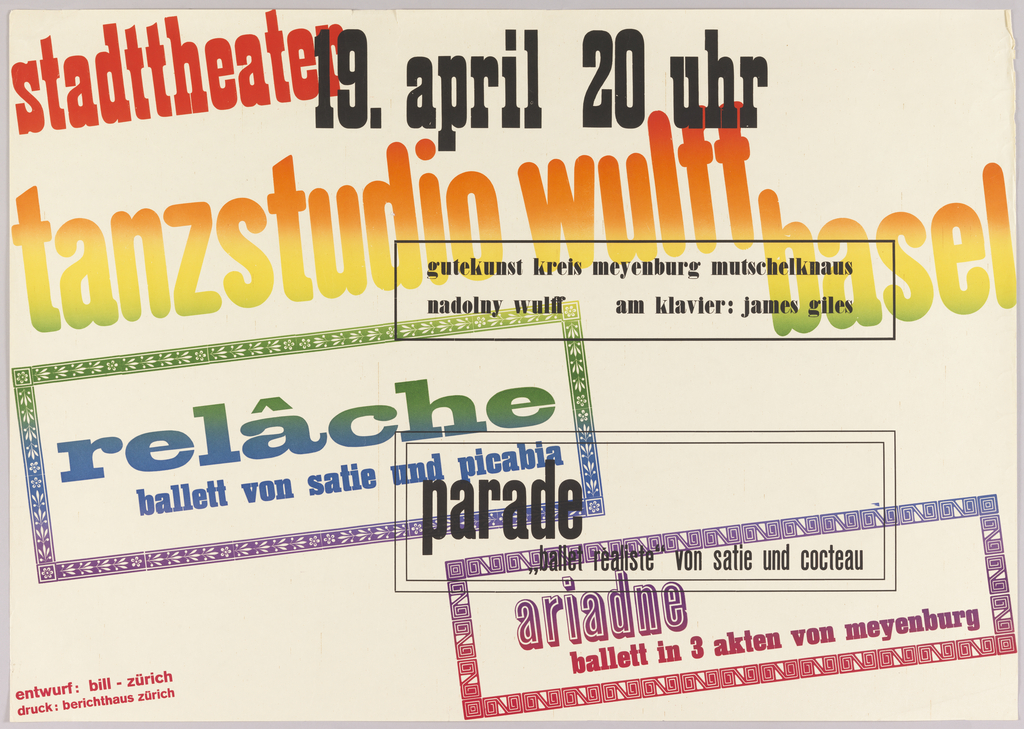In 1931 when he designed this poster, the Swiss artist, designer, and architect Max Bill had already completed several years of study at the Bauhaus under the guidance of artistic luminaries Oskar Schlemmer, Paul Klee, and Wassily Kandinsky. Bill had returned to Switzerland in 1929, and it was while living in Zürich that he received a commission to create a poster announcing the inaugural performance of the dance collective Tanzstudio Wulff.
Tanzstudio Wulff was the brainchild of the dancer Käthe Wulff, who had received her training from one of the pioneers of modern dance, a Hungarian man named Rudolf von Laban. Among Laban’s many groundbreaking contributions to a radically new approach to dance was the concept of “movement choir,” which allowed for a group of dancers to move in a choreographed manner together while still maintaining degrees of personal expression and individuality. As Laban’s student, Wulff was exposed to a new way of perceiving dance at a time when Dada artists were simultaneously exploring an entirely new approach to visual arts, performance, and literature. She collaborated on choreography, costume design, and set design with many Dada artists including Sophie Tauber-Arp, Jean Arp, Hans Richter, and Marcel Janco before founding her own dance studio in Basel.
Bill’s poster advertises performances by the members of Wulff’s studio of several different avant-garde dance pieces, Relâche, Parade, and Ariadne. In the arrangement of his composition for the horizontal poster, Bill has established two axes. Everything printed in black runs parallel to the edges of the paper, but the remainder of the printed design cuts across the page at an upward angle. This style of juxtaposition was a common feature of Bill’s graphic design at the time, and can be seen in his designs from the early 1930s. These two axes allowed Bill to overlap the different blocks of text, a creative way of fitting a great deal of information into a confined space, while also creating a sense of both depth and movement. To address the challenge of having to advertise the spirit of not one but three dances, Bill has printed the name of each ballet in a different font and with a different set of colors. Through this innovative poster design, Bill manages to convey all the necessary information about the upcoming performances. But he also cultivates a sense of rhythmic and coordinated movement that still allows for the individualized expression of each piece—a graphic evocation of Laban’s innovation in modern dance.
